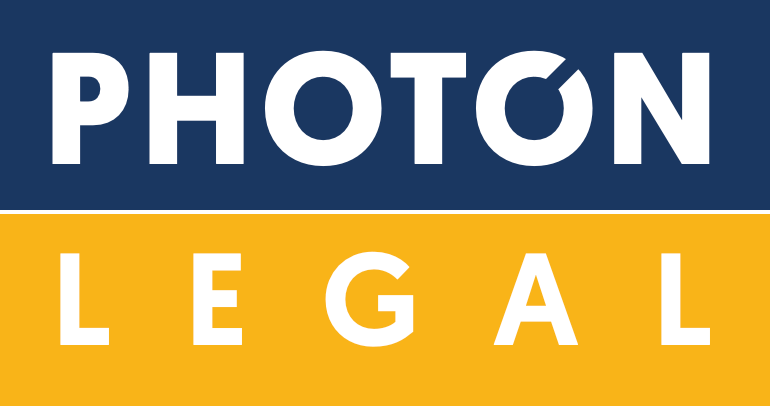
The COVID-19 pandemic pushed healthcare systems to the brink of collapse. The health tech sector fought back by rapidly improving its technological capacity. But while the industry started to actively implement changes, it didn’t stray too far from its previous path. The medical sector simply pushed forward with its digitization track, this time, at a turbocharged rate. Although we might have seen the highest spike in 2020, the technological disruptions that marked the historical year are expected to continue impacting the future. The year 2021 is already having its momentum with significant technological advancements driven by digitization, big data, and advanced analytics.
Read on to learn more about top health tech trends of 2021 that will help your medical organization not only survive the health crisis but also stay ahead of the market.
An overview of the Healthcare Technology market
The pandemic brought challenges that forced healthcare organizations to improve their processes. Hospitals and clinics have adopted technologies to streamline in-patient care and remote consultation, despite the fact that this meant increasing their exposure to cybersecurity risks.
Naturally, IT teams started to play a much bigger role in hospital operations. Software development companies build more and more medical solutions to meet the needs of their healthcare clients. Now, besides traditional systems like EHR and HMS, there is a demand for more advanced software powered by AI and enabling data interoperability. The trend is also apparent in the new record high for global healthcare funding, which hit $80.6 billion raised across 5,500 deals in 2020.
Another interesting fact is that on-demand healthcare was one of the top investment categories in the medical sector last year, with $2.7 billion funding across 68 deals. So let’s discuss how the on-demand economy impacts the healthcare industry in more detail.
The on-demand economy and its new role in healthcare
This kind of economy first came on the scene to provide consumers with quick access to goods and services. On-demand apps allow people to book a ride, hire a contractor, and do their grocery shopping with a few taps on their phones.
But this business model changed not only the way we buy products and services but also the way we work. It created a perfect environment for an independent workforce and helped solve, at least partially, the problem of talent shortage in many sectors.
While Uber remains a classic example of on-demand services, the on-demand economy has grown a lot since it was founded in 2009. According to the Harvard Business Review, there were as many as 150 million independent contractors in North America and Western Europe in 2018.
Driven by connectivity and the popularity of mobile devices, the on-demand economy has spilled over to the healthcare sector, too.
To tackle staff shortages and improve their interactions with patients and other healthcare payers, medical organizations embrace this trend with innovative solutions like Wendy’s platform developed by Demigos for its US-based client. This solution connects people looking for home care for their senior relatives with caregivers in an instant.
Healthcare staff shortages
The COVID-19 pandemic exposed healthcare staffing issues that are expected to persist even when the crisis is over. The World Health Organization forecasts a worldwide shortage of 9.9 million healthcare workers by 2030. The United States alone needs to bring in more than two million new healthcare workers by 2025 to provide adequate care to its aging population.
Needless to say, there’ll be no shortage of healthcare job postings for years to come. The demand for medical staff is expected to be especially high in rural areas. Technological solutions like GapNurse developed by Demigos aim to solve this problem. This web-based platform provides hospitals and clinics with access to a pool of qualified nurses who provide on-demand services. This way, it helps healthcare providers meet their staffing needs.
Telemedicine
Not all ailments require a visit to the hospital. In some cases, teleconsultation is a good alternative to a face-to-face doctor’s appointment. With the outbreak of COVID-19, offering this option to patients became a necessity for medical organizations. Because of the risk of exposure to the virus, patients can’t just run to a hospital when they need medical attention. Fortunately, telemedicine has come to fill the gap.
With telemedicine solutions, patients no longer have to miss important appointments. People who suffer from chronic health issues like hypertension and diabetes can use their personal devices to speak with their doctor from the comfort of their homes.
Regulatory risks
Companies that offer on-demand services are traversing a bumpy terrain. Case in point, Uber ran into trouble when the UK’s Supreme Court ruled that their “self-employed” drivers should be considered their employers. This means Uber drivers are entitled to benefits like holiday pay and minimum wage. Meanwhile, the European Union is only working through the regulations they ought to impose, leaving on-demand platforms to operate in a state of uncertainty until there are clear rules for on-demand services.
In general, on-demand services face the risk of losing a profitable business model due to regulations that bring or can potentially bring unexpected expenses. On the flip side, there should be no compromises when it comes to workers’ rights, so regulations should be a critical component of the on-demand economy.
Emerging healthcare technology trends in 2021
Just like other sectors, the technology trends in healthcare mostly revolve around digitization and data. Here are the top trends to watch out for in 2021.
Cybersecurity
The COVID-19 pandemic left healthcare systems vulnerable to cyberattacks, and cybercriminals were only too happy to seize the opportunity. For instance, hackers targeted BioNTech, Pfizer, and the European Medicines Agency for their vaccine data.
Also, a number of US hospitals had to battle with ransomware. According to the cybersecurity firm Carbon Black, 239.4 million cyberattack attempts were made against their healthcare customers in 2020. Their study further revealed a 9,851% increase in cyberattacks from 2019.
On the bright side, the attacks forced the healthcare systems to become more protective of their cybersecurity infrastructure. The breaches and attacks have made cybersecurity a key consideration in 2021. Healthcare systems need a robust security infrastructure to go with their digital transformation. So, cybersecurity firms will likely be seeing more clients walking into their virtual doors.
Internet of Medical Things (IoMT)
The Internet of Medical Things provides solutions to pertinent healthcare problems — all while reducing costs. IoMT helps optimize workflow, provide real-time data, and increase operational efficiency. Digital tags can even help track counterfeit drugs. According to Goldman Sachs, the increased efficiency provided by IoT healthcare can result in $300 billion worth of savings.
Particularly helpful for administering healthcare, IoMT devices also bring medical services to areas that don’t have full-time hospitals. Portable point-of-care devices can be used to run regular tests and show the results to a remote doctor. In addition, IoMT makes it possible for patients with limited mobility to receive their consultations at home.
The healthcare sector is seeing a huge increase in investments made on IoMT, with its global market expected to balloon to $254.2 million by 2026.
Remote patient monitoring
By allowing doctors to watch over patients who are outside the clinic or hospital, remote patient monitoring has the potential to influence the treatment of chronic diseases like heart problems and diabetes.
The increasing implementation of remote patient monitoring is driven by the widespread use of wearable tech, with devices making medically useful sensors accessible to everyday consumers.
IoMT devices used for remote patient monitoring can provide real-time access to data that’s crucial for preventive care. For instance, a wearable ECG device can alert a doctor of an impending heart attack. Digital blood pressure cuffs are being used to regularly send a patient’s pulse readings and blood pressure to a doctor. Pills can even be armed with edible sensors that let the doctors know if patients are taking their medication as needed.
The wide adoption of remote patient monitoring will have a long-term impact on medical services and the way people manage chronic diseases.
Data interoperability
Data interoperability allows different systems to easily share, retrieve, process, and reuse datasets. Investments in digitization are expected to build on the progress made by Electronic Medical Records (EMR) and Electronic Health Records (EHR), advancing interoperability even more.
Tech giants are also getting involved, with Google launching its Cloud Healthcare Interoperability Readiness Program to help improve compliance with the interoperability rule. Epic, the top provider of EHR in the US, successfully shared more than 221 million patient records in November 2020. This marks a 40% increase from the same month in 2019.
New products have also become available on the market. For instance, the startup Saykara is developing an AI assistant that monitors patient visits and automatically documents consultations.
Billing and claims processing
Interoperable systems and IoMT devices automate healthcare processes, improving the efficiency of administrative tasks like handling online billing and insurance discussions.
Case in point, an integrated e-Prescription system provides medical practitioners with access to information on insurance coverage. This information helps ensure they’re prescribing drugs that are covered by the patient’s insurance plans. Everything is automated. Even the paperwork is verified electronically.
Virtual reality (VR)
Virtual reality is more than a new way to play video games. VR training has enabled surgeons to practice and upgrade their skills at the operating table without having to work on actual patients. And the experiment is successful. While traditional training methods can only improve retention by 10%, VR tech can raise it by up to 75%.
For instance, UK-based Virti helped with the pandemic response by training frontline workers. They used personalized prediction software and gamification to quickly train people on how to navigate an intensive care ward and properly use PPE and ventilators. They even taught the staff the right way to interact with patients and their families.
VR also has a role to play in patient care: it can improve the recovery rates for patients undergoing exercise rehabilitation.
Big data and predictive analytics
Wearable technology can now record continuous data at a fraction of the cost. Interoperable systems and lenient regulations have made it possible to share data sets between healthcare systems. All these factors, along with rapid digitization, have made it possible to generate vast amounts of data that can be analyzed to reveal meaningful patterns and associations.
In particular, big data can be used to gain clinical, operational, and financial insights that help enhance patient care. For example, data was used to predict surges in COVID-19 cases. It was also instrumental in the development of vaccination strategies and the identification of high-risk groups.
Customized mobile apps
With 5.5 billion smartphone users worldwide spending an average of four hours on their devices each day, no business or institution should be without a mobile app. Healthcare organizations are no different.
EHR/EMR systems and a customized mobile app can improve communication between health practitioners and patients through teleconsultations, dispensing e-prescriptions, and capturing big data for better patient care.
Wrapping up
Healthcare providers can only meet the market demands accelerated by the COVID-19 pandemic if they adopt new software solutions and keep up with the rapid digitization. But it’s hard to do on your own, so partnering with an experienced software vendor is a sound idea.
Healthtech vendors like Demigos have been at the forefront of these dramatic technological advancements, creating hospital management platforms, EMR/EHR systems, and customized apps that help future-proof healthcare systems and ensure the best patient care.

